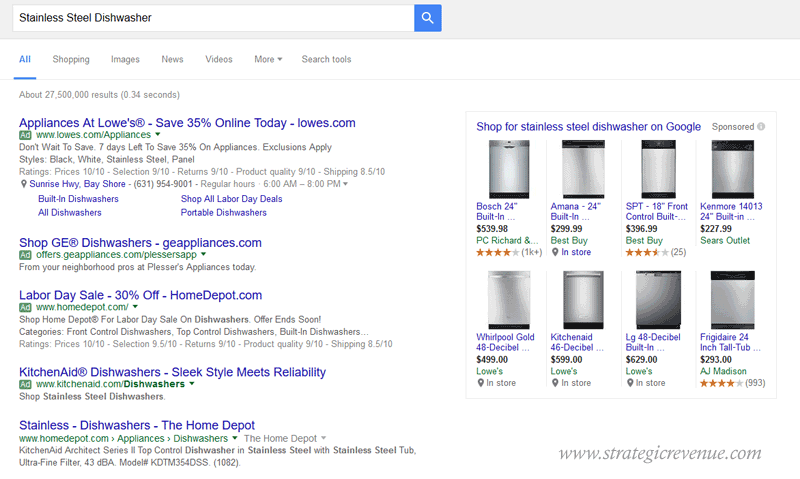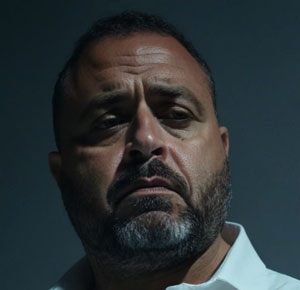If you thought that sponsored search results on the top of seach engines were just for those who are hard to find or those wanting to increase brand value you are dead wrong. A research study conducted by Wordstream.com shows just how inacurate this thought process is. Some key take-away information is below.
Sponsored search results (the ads on top of search engines) account for 64.6% of clicks for “High Commercial Intent” keywords. High Commercial Intent keywords are those words and phrases used when people are most likely to “buy”, not research, the products they’re interested in. Just 35.4% of clicks are attributed to the organic unpaid results. This means that nearly two thirds of the traffic on search engines, for “High Commercial Intent” keywords, are going to companies who pay for placement. This data was gathered on US based advertiser data.

- High Commercial Intent keywords: Someone who is ready to buy something. (Toaster Oven Reviews, Stainless Steel Dishwasher)
- Branded keywords: Someone who is almost ready to buy. (Kenmore Dishwasher, 2016 Ford Focus)
- Local keywords: Someone looking for something near them. (67 Harned Road Commack, Giovanni’s Pizza)
- Question and Informational keywords: Someone who is wanting to learn. (Who was Albert Einstein?, The War of 1812)
Google’s Pay-To-Play system is also taking over more and more of the users screen with strategic placement of ads. Google’s pay-per-click ranking system includes “Quality Scores” for ads which effect their ranking order with the intent of building an ad system which delivers results that are better and even more targeted and relevant than organic results.
Pay-per-click ads have become more and more relevant in search results and are considered, in some cases, higher quality results. Google has also begun to make the paid search ads blend into the search results page and has removed their “sponsored colors” from surrounding the ads and has gone to a smaller and less noticeable green “Ad” square to the left. Furthermore, Google has completely removed the sponsored ads from the right column of the page and has added, at times, 4 sponsored (paid) results to the top of the page instead of three with up to four ads on the bottom.
WOW!! 45.5% of people couldn’t even identify paid ads on the search engine results page, if there was not a right side column, according to the survey.
Important facts:
- Paid search engine ads are steadily gaining ground.
- Organic results account for just 14.5% of the computers screen before scrolling down.
- On average, the top three listing spots (which are usually paid ads) receive 41.1% of the clicks.
- Sponsored ads on “High Commercial Intent” keywords take up 85.2% of the computers screen before scrolling down.
-
WOW! On Average, the top organic listing in Google gets just 8.9% of the clicks. (This means that a #1 organic listing today is near meaningless when compared to where the traffic is ultimately going for “High Commercial Intent” keywords).
- Advertisers running paid search ads for keywords they already rank for organically, still receive 89% of new users from their PPC campaigns, meaning the traffic the paid search results delivered were those users who were outside of reach of their organic keywords.
Product Ads
In May of 2012 Google changed the way product ads are displayed on its search engine transitioning it to a purely commercial model. Products are now displayed at the top of the search engine with reviews, ratings and prices pushing down the organic results of website listings underneath as many as six to ten direct product links with a small identifier “Sponsored”.

Hovering over this notification will display the following message:
Based on your search query, we think you are trying to find a product. Clicking in this box will show you results from providers who can fulfill your request. Google may be compensated by some of these providers.
What does all of this mean?
Clearly, if you are not running paid search campaigns, irregardless of where your website ranks organically, you’re likely missing out on users who could be visiting your website verses your competitor. Even if you hold the #1 organic result, thousands of potential consumers could just not be finding you anymore. It might be time to totally rethink your marketing strategy, even if your site ranks fantastic, for some or even all of the keywords you could benefit from.
Want to find out more?
Let’s get you found with paid-search advertising.

About The Author: John Colascione is Chief Executive Officer of Internet Marketing Services Inc. He specializes in Website Monetization, is a Google AdWords Certified Professional, authored a ‘how to’ book called ”Mastering Your Website‘, and is a key player in several Internet related businesses through his search engine strategy brand Searchen Networks®

 *** Here Is A List Of Some Of The Best Domain Name Resources Available ***
*** Here Is A List Of Some Of The Best Domain Name Resources Available ***